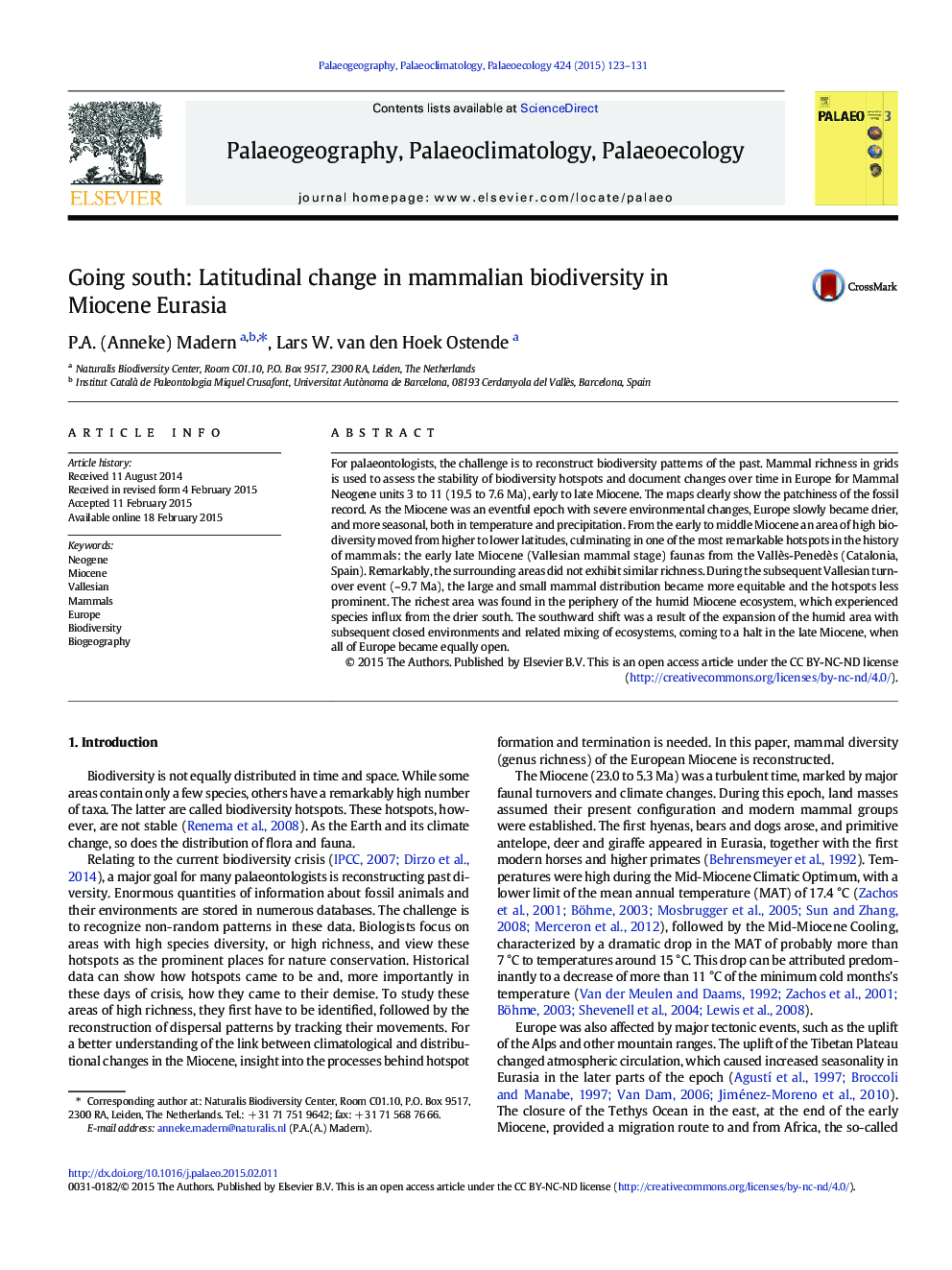| Article ID | Journal | Published Year | Pages | File Type |
|---|---|---|---|---|
| 6349762 | Palaeogeography, Palaeoclimatology, Palaeoecology | 2015 | 9 Pages |
â¢Eurasian Miocene mammal data from the NOW database were plotted in grids.â¢Genus richness drifted from high to lower latitudes between early to middle Miocene.â¢The most notable hotspot was found in the Vallesian Vallès-Penedès basin (MNEQ 9).â¢Mixing of bioprovinces caused areas with higher richness.â¢The southward shift was caused by the expansion of the humid, forested ecosystem.
For palaeontologists, the challenge is to reconstruct biodiversity patterns of the past. Mammal richness in grids is used to assess the stability of biodiversity hotspots and document changes over time in Europe for Mammal Neogene units 3 to 11 (19.5 to 7.6 Ma), early to late Miocene. The maps clearly show the patchiness of the fossil record. As the Miocene was an eventful epoch with severe environmental changes, Europe slowly became drier, and more seasonal, both in temperature and precipitation. From the early to middle Miocene an area of high biodiversity moved from higher to lower latitudes, culminating in one of the most remarkable hotspots in the history of mammals: the early late Miocene (Vallesian mammal stage) faunas from the Vallès-Penedès (Catalonia, Spain). Remarkably, the surrounding areas did not exhibit similar richness. During the subsequent Vallesian turnover event (~ 9.7 Ma), the large and small mammal distribution became more equitable and the hotspots less prominent. The richest area was found in the periphery of the humid Miocene ecosystem, which experienced species influx from the drier south. The southward shift was a result of the expansion of the humid area with subsequent closed environments and related mixing of ecosystems, coming to a halt in the late Miocene, when all of Europe became equally open.
